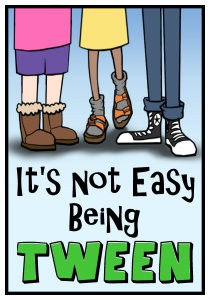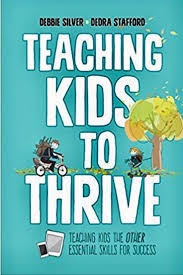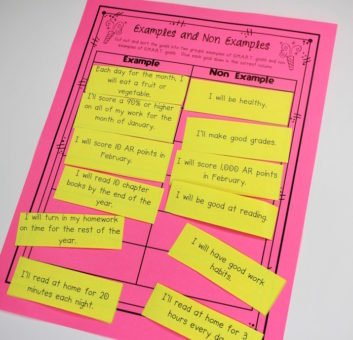Helping Students Learn to Organize Their Lives
A MiddleWeb Blog
 When I began working as a special education teacher, I lost a lot of sleep over trying to find ways to reach and support my students. I had never faced some of the issues they were dealing with, so I didn’t know exactly what they needed. I felt frustrated and, at times, even helpless.
When I began working as a special education teacher, I lost a lot of sleep over trying to find ways to reach and support my students. I had never faced some of the issues they were dealing with, so I didn’t know exactly what they needed. I felt frustrated and, at times, even helpless.
So I did what always makes me feel better—I researched how students with learning challenges experienced the classroom. I adapted my practice and had positive results. Many years later, I am still a brain science nerd and believe my “nerdness” has made me a better English teacher.
Over the last decade, I’ve read a lot about students who have weak executive function skills and I saw my special education students among them. I continue to read everything that comes out on the topic.

Silver and Stafford break down Executive Function into six skills:
- Self-Regulation and Self-Control
- Working Memory
- Task Initiation, Organization, and Time Management
- Flexibility
- Emotional Regulation
- Focus
I have found success with structuring my classroom to address deficits in these skills. Students with executive function issues often lack the capacity to organize their own lives and need assistance from the outside. This is where I am able to step in to help them manage their workload. As a bonus, in addition to helping them, I find that it forces my left-brained self to be more organized, and all the students in my class benefit from these interventions, regardless of whether they have a label.
Organization and more
Following are some techniques I use to help strengthen what I consider one of the most crucial executive functioning skills in middle school students—Task Initiation, Organization, and Time Management.
Task Initiation:
1. Provide a model or example of the final product so the student doesn’t feel overwhelmed and freeze up because they don’t know where to begin.
2. Offer instructions in multiple forms and not merely verbally.
3. Help the students to set personal SMART learning goals for the project, marking period, week, unit, etc. These are goals that are Specific, Measurable, Achievable, Results-focused, and Time-bound.

As an alternative, they can set WOOP goals. These are goals about What they want to accomplish, the Outcome they are hoping for, any Obstacles that may prevent them from being successful, and their Plan to achieve the goal.
4. Turn your rubrics into checklists and self-checks that the student can complete independently prior to submitting a project.
Organization:
1. Teach the students how to do sketchnotes. I am a huge fan of Sylvia Duckworth’s illustrations and am able to find or develop these for the majority of topics we study. Students also enjoy making their own either by hand or using technology.
2. Use graphic organizers as much as possible. The internet is a treasure trove of free graphic organizers categorized by purpose.
3. Have students use a planner. Our school, and I believe most middle schools, offer them at the beginning of the year.
4. If a planner is too difficult, have them keep a “hot” folder where all work handed out that day goes in one pocket and all work completed for the next day goes in the other. This is also a great location for parent communication such as permission slips. Many have experienced this system in elementary school, and I find it works just as well for adolescents.

6. The transition to a departmentalized middle school can be a difficult adjustment for children because teachers have their own specific requirements. In my class, we don’t have a textbook, so students create a sectioned binder of materials.
Each handout I give has the section title in all caps in the bottom right corner so they always know where to find it. I also keep a master binder they can look at if they are unsure what goes where. One caveat: I NEVER grade this binder. Grades should be based on their grasp of the material, not their behavior or organization skills.
7. Teach students how to determine what is most crucial in a chapter by showing them the functions of different text structures. Also allow them to color-code and highlight important material in a text.
8. Use guided, skeleton notes or even provide a copy. I do this often because many students cannot take notes from a lecture and this practice gets them to focus on the information presented and the discussion rather than on what to write.
9. On the first day of school, I have a mini-poster on the door outside of my room with a checklist of what to bring to class every day. It never changes, but I can add a post-it note if there is something out of the ordinary that they need. I have some students that check this list every day, all year.
10. Have a supply lending station. Chastising students for not having a pencil or lined paper is just not a battle where I want to spend my energy.
11. Give a daily heads-up. At the end of every class, I ask the class, “What’s due tomorrow?” and have at least one person answer.
Time Management:

2. If there is a more minor assignment, I help them learn how to work backwards by looking at the final product, breaking it down into its essential components, and making their own checklist, which can include estimated times.
Please share some of your tools for helping students become more organized.






























Hi Cheryl! Thanks so much for the shout-out about our book. I’m going to include tips from your article in my future workshops. You always have such great ideas!! Keep ’em coming!